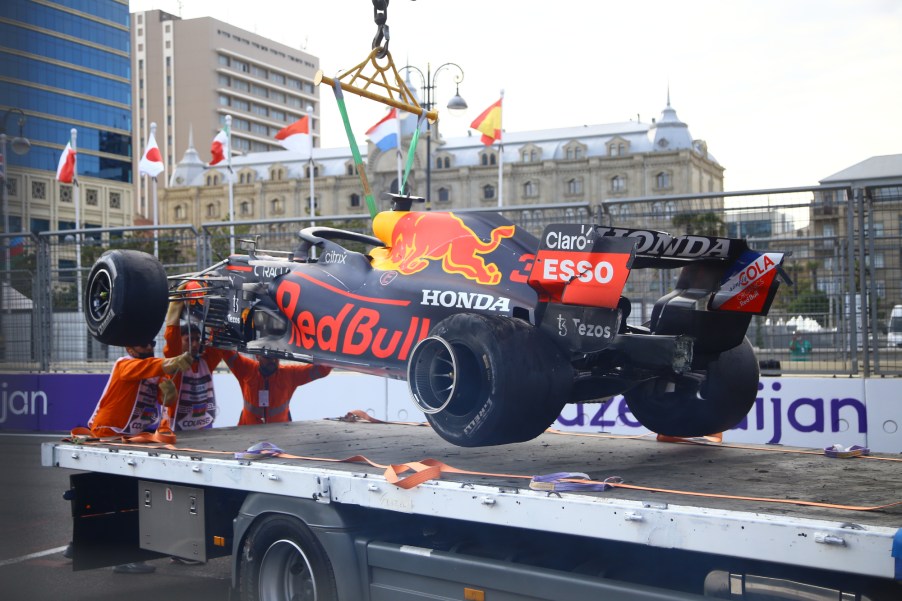
Should Repairs Be Banned on Formula 1 Cars During Red Flags?
Along with the changes to the 2022 F1 cars, regulation and budget changes are also happening. The design team behind the new cars noted that close-contact racing impacted the tighter chassis design. With the implication that the 2022 F1 cars will lead to more red flags, should Formula 1 teams be able to fix the vehicles during these breaks?
Should teams be able to fix Formula 1 cars on break?

RaceFans raised an interesting point last week. Should Formula 1 ban teams from being able to fix the cars when a red flag is out? Depending on which teams were involved in the accident, fixing the vehicle seems like quite an advantage. At the British Grand Prix, Lewis Hamilton and Max Verstappen had an altercation on track. Verstappen went careening into the barriers, but Hamilton was able to drive off. During the red flag event, the Mercedes-AMG Petronas team was able to put the car back together. Hamilton won the race and gained 25 points for his win.
Another time at the Emilia Romagna Grand Prix, a crash between George Russell and Valtteri Bottas cost $1.8 million in damage. During the red flag of this race, Hamilton was also able to repair his car. He went on to score 19 points for second place.
In the last 12 months, six red flags have gone out to stop the race during various events. Before that, red flags were not very common.
Damage to Formula 1 cars can impact any team
Are the red flags being used to add some false excitement to the races? Last season, many fans complained that the races were boring with the usual Hamilton, Verstappen, Bottas start (and finish). The flag allows a standing restart, which shakes things up a bit.
However, these restarts and flags seem to be offering an unfair advantage. If drivers were to start from the pit lane after repairs, it might allow the cars to start from the back of the grid. Fans seem to enjoy watching Hamilton zip through the pack, anyway. It would also offer a more level playing field.
Otherwise, the cars that needed repair have a huge advantage. Change tires, repair bits, and get back into position with the other cars that didn’t even leave the track. If Hamilton could not repair his tire at Silverstone, he likely wouldn’t have finished the race.
The teams, the FIA, and Formula 1 do not consider the “consequences” of the collision when it comes to penalties. “So when [the stewards] judge an incident, they judge the incident itself, and the merits of the incident, not what happens afterward as a consequence. That’s been something the stewards have done for many years,” F1 race director Michael Masi commented. This is how the decision to give Hamilton a 10-second penalty came about. The stewards did not take the result of Verstappen being injured into consideration.
Some repairs should be approved due to safety
Such instances have benefitted other drivers in the past; it isn’t just Hamilton. The one important factor here is safety. Allowing a Formula 1 car to change tires due to debris on the track makes sense. Allowing teams to change from wet to dry tires also makes sense if the weather caused an issue.
IndyCar, NASCAR, IMSA do not allow Formula 1 teams to touch the car during red flags. Part of motorsport, in general, is that there is always luck involved. Sometimes cars get damaged due to no fault of the driver, and another driver benefits from it. On the other hand, cars can sustain damage and be retired from the race during a bout of bad luck.
The rules related to Formula 1 cars and races will never be perfect. Circumstances cannot apply to all issues that arise on the track, as that’s the fun in sports. Perhaps a revisit to the rules would do some good, but that could not be the case as well.



